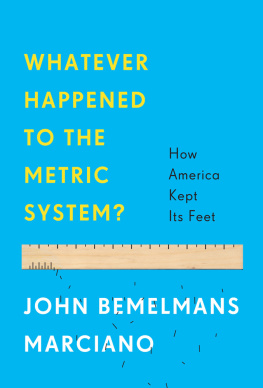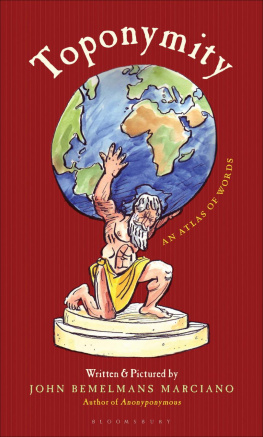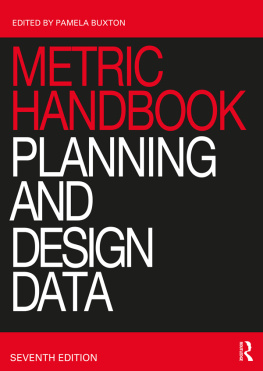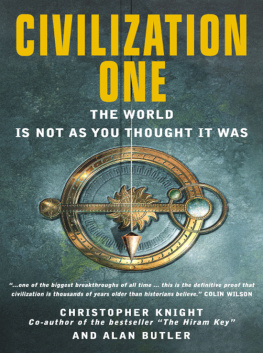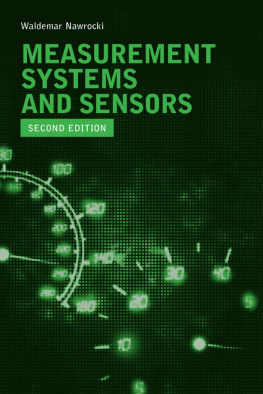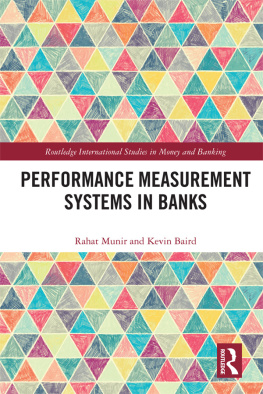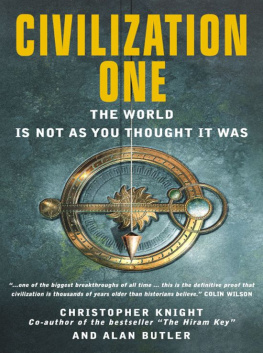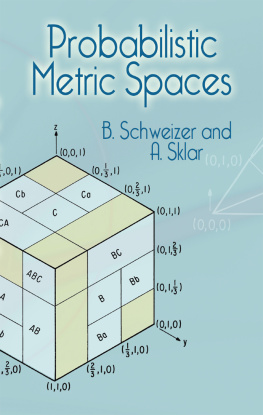I want to thank George Gibson, Jacqueline Johnson, and all the people at Bloomsbury, for publishing not only this book, but so many others that have made this one possible. To Benjamin Adams I owe a particular debt, as he largely set me on this course. A special thank-you goes out to Bess Lovejoy, whose research and advice have been crucial. Then there are those who put up with me over three years of being all too often unavailable, most especially my wife, Andromache Chalfant, and our daughter, Galatea.
U.S. Customary Measures |
Unit | Value |
Length |
mile | 5280 ft |
foot |
inch | 1/12th ft |
Area |
acre | 43,560 sq ft |
Volume |
gallon | 128 oz |
quart | 32 oz |
pint | 16 oz |
cup | 8 oz |
ounce |
Weight |
ton | 1000 lb |
pound |
ounce | 1/16th lb |
Unlike the Imperial measures (which were set by law) or the Systme International measures (which are set by an international organization), customary measures are defined by custom, and thus subject to continual change. The table on the previous page shows the American weights and measures currently in general use. Excluded are units confined to limited or specific use, such as the yard (used mostly with fabrics or on the football field), the fathom (used for sea depth), and all units of dry capacity.
Aside from the cup used in cooking, pints and quarts of fruits and vegetables, and cords of firewood, non-liquid volumes in America are generally given in cubic inches, feet, yards, or meters. The most obvious problem with dry measures is how easily they get confused with wet ones; even though most American kitchens have both a set of measuring cups meant for dry capacity and a large graduated measuring cup meant for liquid capacity, the two types tend to be used indiscriminately. (The difference is significant; two cups of water measured dry is over a quarter-cup more than one measured wet.) Further muddying things are teaspoons and tablespoons, which are neither wet nor dry but metric , set to 5ml and 15ml.
The so-called octal math of the Middle Ages is still in modern customary measures. If you double a liquid ounce four times you get a pint; do it seven times and you have a gallon. Inches are divided into halves, quarters, eighths, and so on. This form of math also explains the seemingly inexplicable number of feet in the mile and acre, both of which were based on the rod used in surveying. An acre is 4 40 rods (160 sq rods), with 40 rods being a furlong (length of a furrow). Eight furlongs (320 rods) make a mile, and each square mile contains 640 acres. Such numbers4, 8, 16, 32, 64made doubling and halving easy; where they got ugly was when survey-based units were related to the foot, as a rod measures 16.5 ft. Thus:
1 mile = 320 16.5 ft = 5280 ft
1 sq rod = 16.5 ft 16.5 ft = 272.25 sq ft
1 acre = 160 272.25 sq ft = 43,560 sq ft
For however much such binary math underpins the customary system, in actual use decimals are becoming ever more pervasive. Whereas measures used to be expressed the same way we tell time (e.g., 5:23 = 5/12 hours + 23/60 minutes), we now combine different units only for short distance measures such as 3' 5 1/4". But even this is increasingly expressed as 41.25". Decimal subdivision of units is becoming the rule: The mile, the acre, and the ounces of both weight and capacity are remaindered decimally, as is the pound (except for newborns). For all intents and purposes, American customary measures are now decimal measures.
CUSTOMARY METRIC MEASURES |
Unit | SI Value | Equivalency in U.S. Customary Measures |
Length |
kilometer | 1000m | 0.62 miles |
meter | 3.28 ft |
centimeter | 0.01m | 0.39 in |
millimeter | 0.001m | 0.039 in |
Area |
hectare | 10,000m2 | 2.47 acres |
Volume |
liter | 0.001m3 | 1.057 quart |
milliliter or cc (cubic centimeter) | 0.000001m3 | 0.034 oz |
Weight |
ton | 1,000kg | 1.1 U.S. ton |
kilogram | 2.2 lb |
gram | 0.001kg | o.035 oz |
milligram | 0.000001kg | 0.015 grains |
The metric system and the Systme International dUnits (SI) are not the same thing. The SI was born in 1960 and refers to units governed by the BIPM, whereas metric is a broad term that can be used for all permutations of the system dating back to the 1790s, as well as for the measures used in everyday life. In SI, all measures of length, area, capacity, and weight are derived from the meter and kilogram, whereas common practice also includes such units as the liter, hectare, and ton. The BIPM recognizes such units as acceptable (unlike the are and calorie), and gives them the symbols l, ha, and t. In theory, all units can be used with all prefixes; in practice, people tend to use only a few permutations of each unit (i.e., centimeters, but not decimeters or decameters), which vary from country to country, or will use a given prefix in only one context, such as measuring the destructive force of bombs in megatons (millions of metric tons of TNT).
J ohn Bemelmans Marciano is a New York Times bestselling author and illustrator. His work includes the distinctive reference books Anonyponymous and Toponymity as well as the childrens books Madeline at the White House and The 9 Lives of Alexander Baddenfield . A word and math geek, he lives in Brooklyn with his wife, daughter, and cat.
Abbe, Cleveland. Report of Committee on Standard Time. Proceedings of the American Metrological Society II (1880): 1744.
. A Short Account of the Circumstances Attending the Inception of Weather Forecast Work by the United States. Weather Bureau Topics and Personnel (April 1916): 13.
Achelis, Elisabeth. Be Not Silent. New York: Pageant, 1961.
. The Calendar for Everybody . New York: G. P. Putnams Sons, 1943.
. Of Time and the Calendar . New York: Hermitage House, 1955.
. The World Calendar . New York: G. P. Putnams Sons, 1937.
Ackerman, Carl W. George Eastman . Boston: Houghton Mifflin, 1930.
Adams, John Quincy. The Diary of John Quincy Adams . Edited by Joseph Nevins. New York: Longmans, Green, 1928.
. Report upon Weights and Measures . Washington, D.C.: Gales and Seaton, 1821.
Adams, William Howard. The Paris Years of Thomas Jefferson . New Haven: Yale University Press, 1997.
Addison, Paul. USMA History: John T. Johnson, a True Metric Pioneer Who Was USMA President for 25 Years. Metric Today 32, no. 5 (Sept.Oct. 1997): 4.
Alder, Ken. The Measure of All Things: The Seven-Year Odyssey and Hidden Error That Transformed the World. New York: Free Press, 2002.
. A Revolution to Measure. In The Values of Precision . Edited by M. Norton Wise. 3971. Princeton: Princeton University Press, 1995.
Alexander, J. H. International Coinage for Great Britain and the United States . Oxford: John Henry and James Parker, 1857.
Next page
